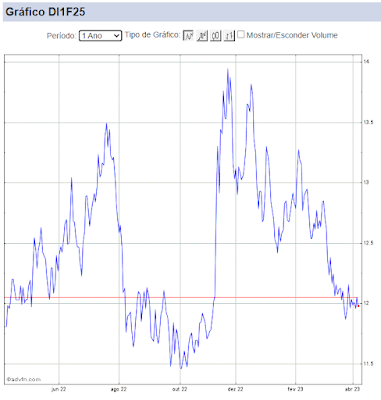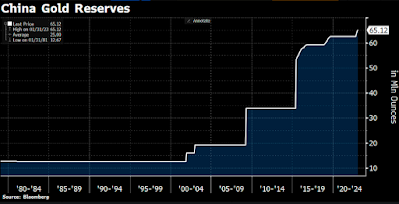Fed & Jackson Hole
Desde meu último comentário, na sexta-feira pela manhã, vimos à continuação de um movimento de acomodação dos ativos de risco. O destaque acabou ficando para o desempenho relativo mais positivo dos mercados de câmbio e juros no Brasil, após o BCB decidir por reduzir a colocação de swaps cambiais para os US$500mm diários, que vinham sendo regra até poucas semanas atrás.
Minha visão continua a mesma daquela destacada neste fórum no final da semana passada. Já vínhamos alertando para a possibilidade de um período de consolidação/realização de lucros dos ativos de risco, em meio a uma posição técnica e valuations menos favoráveis, sinais de uma nova rodada de desaceleração da China e, agora, com a possibilidade da retomada do processo de alta de juros nos EUA. Por ora, vejo este processo apenas como uma acomodação dos ativos de risco, e não uma mudança definitiva de tendência. As declarações do Fed parecem ter sido o trigger definitivo para o movimento. Contudo, mesmo que o banco central decida elevar as taxas de juros em 25bps até o final do ano, o processo será extremamente lento e gradual, e a taxa final de equilíbrio, muito provavelmente, será mais baixa para os padrões históricos.
Brasil – No final de semana, a mídia continuou alertando para as dificuldades que o governo de Michel Temer terá para aprovar a PEC do Teto dos Gastos. Além disso, alguns periódicos estão vazando algumas delações premiadas que incriminariam novos personagens do antigo governo no escândalo do Petrolão e seus desdobramentos.
A aprovação do impeachment já me parece totalmente precificada nos ativos locais. De agora em diante, devemos prestar atenção à aprovação dos projetos de ajuste econômico, assim como o desenrolar do cenário externo. Em relação ao ajuste econômico, ainda coloco grandes expectativas na aprovação do que já foi anunciado até o momento. Contudo, tenho total convicção que os investidores tratarão o pós-impeachment como o momento decisivo nesta frente. Caso o governo não mostre condições de aprovar o mínimo necessário para o ajuste, a “lua de mel” entre o mercado e o governo poderá sofrer uma dura reviravolta.
EUA – No final de semana, Stanley Fisher – um dos mais importantes membros do Fed e do FOMC – se juntou a Dudley e Williams para alertar sobre o bom desempenho da economia dos EUA e para a possibilidade de mais uma alta de juros ainda este ano. Nos últimos dias, importantes membros da instituição, considerados da “ala central do comitê”, e muito próximos a Yellen, vieram à mídia dar sinais de que existem condições para que o processo de alta de juros seja retomado. Acredito que eles não poderiam ser mais explícitos e organizados em relação a mensagem que estão buscando passar.
Os ativos de risco, por sua vez, estão reagindo de maneira fluida a estas mensagens. Acredito que existem algumas explicações para isso. Primeiro, o Fed já tentou elevar os juros em outros momentos este ano, e acabou não conseguindo efetivar a medida. Segundo, o ambiente global está ajudando a ancorar as taxas de juros nos EUA. Mesmo que uma alta de juros ocorra no curto-prazo, o mercado está migrando para um cenário em que a taxa final de equilíbrio acaba sendo baixa para os padrões históricos, o que ajuda a evitar reações mais acentuadas dos ativos de risco.
China – Continuo vendo o país como o principal risco para a economia mundial e os mercados financeiros globais. Por ora, a desaceleração do país está sendo gradual, o que traz uma leitura relativamente saudável para o processo e para os ativos de risco. Caso a desaceleração deixe de ser gradual, e acabe criando contágio para outras economia do mundo, o cenário pode acabar sofrendo uma reversão abrupta.
Jackson Hole – A poucos dias da principal conferência dos principais bancos centrais e economistas de política monetária ao redor do mundo, 2 papers de respeitados membros do staff do Fed foram divulgados, com conclusões parecidas, e que devem ditar a conferência este ano, assim como os próximos passos de política monetária no mundo desenvolvido.
De maneira geral, os estudos mostram que a política monetária não convencional (QE, juros negativos e etc) ainda podem ajudar as economias desenvolvidas em seu processo de normalização, mas sua potência está ficando cada vez menos eficaz. As taxas de juros de equilíbrio nessas economias deve ser muito mais baixa do que no passado recente, e outras medidas, especialmente fiscais e estruturais, devem ser tomadas em conjunto com a política monetária para lidar com o cenário atual.
Parece-me que os banqueiros centrais já estão em busca de instrumentos para lidar com a próxima crise global. É sempre difícil prever quando uma nova crise afetará o mundo, mas diante dos enormes obstáculos para o crescimento global (demografia, produtividade baixa, e etc) é bastante prudente este tipo de debate.
Abaixo, estou reproduzindo um comentário do Morgan Stanley a respeito de um desses papers, por achar que seja um tema que deve ganhar espaço e importância nos próximos meses:
The topic of Chair Yellen's speech kicking off the Jackson Hole Conference on "Designing Resilient Monetary Policy Frameworks for the Future" was finally posted by the Fed on Friday. "The Federal Reserve's Monetary Policy Toolkit" doesn't at first read sound too promising, and maybe that contributed to how poorly rates markets traded Friday. A top Fed staff economist, David Reifschneider, has just released a paper titled "Gauging the Ability of the FOMC to Respond to Future Recessions," which sounds like it could be the subtitle of a speech about "The Federal Reserve's Monetary Policy Toolkit," so we assume it has importantly informed Yellen's thinking in what we'll hear from her Friday after debate in recent days among other Fed officials on this topic. On Monday San Francisco Fed President Williams published the note "Monetary Policy in a Low R-star World," warning that in a "new normal" of a permanently depressed neutral real fed funds rate, without fundamental changes to the Fed's framework they won't be able to respond adequately to future downturns, meaning "recessions will tend to be longer and deeper, recoveries slower, and the risks of unacceptably low inflation and the ultimate loss of the nominal anchor will be higher." Williams argued for the Fed to be actively considering now raising its inflation target as one approach to creating more room for future conventional policy easing. Dudley called that "premature" in his interview Tuesday. There are "other ways to cope with an economic downturn" that "we have shown to be effective … such as forward guidance, such as quantitative easing, extending the duration of our portfolio," and those tools "coupled with a fiscal policy that maybe takes on a larger role in economic downturns might be sufficient."
The Reifschneider paper, running simulations through the Fed's macro model, doesn't disagree with Dudley that unconventional tools "might be sufficient" to deliver the equivalent of the 550 bp of rate cuts that have been the average Fed response to recessions after the fed funds rate hits the zero lower bound early in the next easing cycle. But there are some extreme looking numbers required on QE and rates and some potentially challenging assumptions and starting point conditions required to reach that conclusion. The implications of the paper come off as more in line with Williams' worries that the Fed's current policy framework is seriously at risk of being inadequate to deal with future recessions and needs to be reconsidered now than Dudley's higher confidence in the scope for the Fed to respond to a future downturn with unconventional tools. We'll look to see how Chair Yellen is viewing these medium-term risks and implications for how the FOMC should be approaching policy now in her speech on Friday.
In a "secular stagnation" scenario in which the starting point for the recession is a 2% nominal fed funds rate, 2% inflation and a 0% neutral real rate, Reifschneider finds that "monetary policy is still able to provide enough additional accommodation through asset purchases and forward guidance to overcome the effects of the ELB [effective lower bound on nominal rates] constraint." But "the catch to this result" is that to get that resultthe model calls for $4 trillion in QE, more than the total of all programs from 2008-14. Or the Fed could try to promise they wouldn't raise rates until the unemployment rate fell below 4%, which if believed and if the starting point were a yield curve that looked a lot more "normal" than the current one, might lower the QE needed to $3 trillion. That "would also involve breaking new ground in the use of non-traditional policy tools."The expected and desired impact of these new extremes in QE/guidance would be to "push long-term Treasury yields down to 1/2 percent, an unprecedentedly low level that might be difficult to achieve in practice." And even if achieved "there would be a risk that these tools might not prove to be as effective when pushed this far as the model simulations suggest." The experience of Japan and Europe certainly suggests to us there is a significant risk, if not a likelihood, that the FRB-US model simulations are overestimating the efficacy of such outsized QE and the positive impact of reaching a 0.50% 30-year bond yield.
In addition, for the modeled results to work, the Fed at the start of the recession would have to "immediately announce an asset-purchase program and their intention to pursue a lower-for-longer funds rate strategy." Any delays in recognizing and responding to the unfolding recession "can diminish considerably the actual stimulus provided by forward guidance and asset purchases" (give the Bank of England credit on that score). Moreover, the model simulations assume a future starting point for the recession response being an economy at full employment with inflation at 2%, long-run interest rates at "normal" levels, and the Fed's balance sheet more normalized. Under current actual circumstances of the economy not fully recovered from the last recession, rates still very low, and the Fed's balance sheet still very elevated, "the ability of monetary policy to respond to a recession, should one occur in the near term, would be more limited than suggested by the analysis in this paper." So while Reifschneider is clear in concluding that the Fed could have adequate tools to a respond to a future recession, the extent of the unconventional easing required and the list of assumptions that need to be satisfied for his simulations to work aren't likely to raise the confidence of many readers of his paper in the efficacy of the "Federal Reserve's Policy Toolbox" that Chair Yellen will be speaking on in Jackson Hole. Her speech will kick off a conference that we expect will be largely focused on what central banks globally should be do if, as seems increasingly likely, global real interest rates are going to stay very low indefinitely or even continue a decades-long declining trend. Hoping for fiscal policy to take the burden from monetary policy will probably be a popular but in many parts of the world, including the U.S., not especially realistic prescription.


Comentários
Postar um comentário